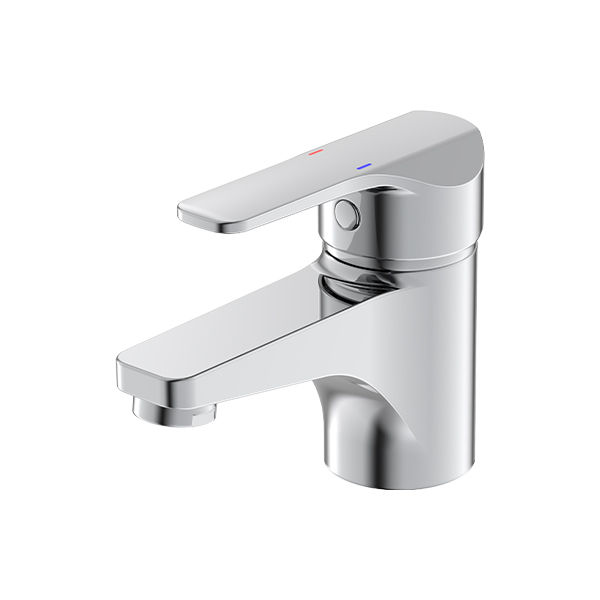Enhanced User Experience and Operational Simplicity
The immediate value of this single lever mixer faucet lies in the streamlined user experience it provides. The design fundamentally simplifies the task of achieving the desired water temperature and flow.

Intuitive Control: A single lever allows for one-handed, simultaneous adjustment of both temperature and volume. Moving the lever left or right adjusts the temperature blend, while raising or lowering it controls the flow. This eliminates the often-frustrating process of adjusting two separate knobs to find a comfortable balance, a process that can be particularly challenging for children or those with limited dexterity.
Consistent Temperature Memory: Many users develop a muscle memory for the precise lever position that delivers their preferred shower or bath temperature. This allows them to achieve a consistent result quickly, without the trial and error associated with separate hot and cold controls. The ease of use provided by a single-lever bath mixer faucet turns a routine task into a seamless and efficient interaction.
Speed and Efficiency: Filling a bathtub becomes a faster process. The user can engage the full flow of mixed water immediately, rather than slowly opening two valves and adjusting them incrementally. This operational efficiency is a small but meaningful quality-of-life improvement that is appreciated every time the bath is used.
Contribution to Water and Energy Conservation
Beyond user convenience, the single-lever bath mixer faucet offers tangible benefits in resource management, aligning with modern concerns for sustainability and cost savings.
Reduced Water Waste: The ability to quickly achieve the correct temperature minimizes the amount of water that runs down the drain while the user waits for the mix to stabilize. With two-handle faucets, it is common to waste water by alternately adjusting the hot and cold knobs until the right temperature is found. The streamlined mixing process of a single-lever bath mixer faucet curtails this waste.
Improved Energy Efficiency: This water conservation directly translates to energy savings. Wasting hot water means wasting the energy used to heat it. By enabling a faster and more precise temperature selection, the faucet reduces the volume of unnecessarily heated water that is poured away. Over time, this efficiency can contribute to lower utility bills and a reduced environmental footprint, adding a layer of economic and ecological value to the fixture.
Aesthetic Versatility and Design Integration
The clean, minimalist profile of a single-lever design holds significant aesthetic value, allowing it to integrate seamlessly into a wide range of bathroom styles.
Sleek and Uncluttered Look: The single lever creates a less busy visual appearance compared to a two- or three-handle setup. This minimalist approach is a hallmark of contemporary and modern design, contributing to a sense of order and calm in the bathroom environment.
Adaptability to Various Styles: While inherently modern, the basic form of a single-lever bath mixer faucet is versatile. It can be found in finishes ranging from chrome and brushed nickel to matte black and bronze, and with designs that span from starkly geometric to softly curved. This allows it to complement not only ultra-modern bathrooms but also to act as a clean, functional focal point in more transitional or eclectic spaces.
Accessibility and Safety Considerations
The functional design of this faucet also provides inherent safety and accessibility advantages, making the bathroom a more manageable space for a diverse range of users.
Ease of Use for All Abilities: The simple, single-handle operation is significantly easier to manage for individuals with arthritis, limited hand strength, or other physical limitations. The lever is generally easier to grip and manipulate than small, sometimes stiff, separate knobs.
Scald Prevention: While not a substitute for a dedicated thermostatic mixing valve, a single-lever faucet can still offer a degree of safety. The user can quickly shut off the water with one motion if it becomes too hot, a faster reaction than is possible when trying to close two separate valves. This responsive control adds a layer of protection against accidental scalding.

 English
English Español
Español русский
русский

